KYZEE KM10 Car Circuit Tester
315,00 ر.س The price does not include Value Added Tax (VAT), which will be calculated during checkout.
Kzyee KM10 Power Scan Car Circuit Tester is a versatile diagnostic tool for quickly and accurately troubleshooting electrical issues in 12V and 24V vehicles.
KM10 Car Circuit Tester: The Indispensable Automotive Diagnostic Tool
The KM10 car circuit tester is an essential power scan tool for diagnosing electrical and electronic circuits in cars and trucks. It’s a must-have for any automotive repair shop, enabling technicians to quickly and efficiently identify and repair electrical faults.
Table of Contents
ToggleGet you Car Circuit Tester From Compu-Car, your Trusted partner for Car Diagnostic and Inspection tools in Saudi Arabia
Key Features & Benefits
- Multifunctional:
- Unlike other car circuit testers with basic functions, the KM10 offers a wide range of in-depth services that facilitate diagnosis and repair. It can be used to test electrical circuits, diagnose circuit faults, check good and bad circuits, activate components inside and outside the vehicle, sense high and low voltage, and test various electronic and electrical systems in the car.
- High Accuracy:
- The device boasts a voltage accuracy of 0.1 volts, allowing for precise diagnosis of DC voltage, AC voltage, resistance, and diodes in 12V-24V automotive electrical systems.
- Fast Diagnosis:
- With its multiple functions and high accuracy, the KM10 can perform a series of in-depth services and accelerate the diagnostic process.
- Ease of Use:
- The device features a user-friendly interface, making it suitable for automotive technicians of varying experience levels.
- High Power:
- The KZYEE KM10 Powerscan Automotive Diagnostic can power components such as radiator fans, starter motors, relays, window regulators, windshield wipers, and more. It can also perform continuity checks and resistance checks, which are the two most important parameters for tracking the path of a car circuit and identifying the parts of the complete circuit and which ones are stopped.
- Independence:
- The car circuit tester works with the car battery or cigarette lighter, making it independent and not requiring an additional battery.
- Extension Cord & Built-in Light:
- The device includes a 6-meter extension cord that allows you to test circuits throughout the car without having to search for a power outlet. It also has a built-in light that adequately illuminates the work area.
- Advanced Diagnostics:
- The device performs accurate diagnosis of DC, AC, resistors, and diodes.
- Wide Compatibility:
- The device works with 12V and 24V vehicles.
- User-Friendly:
- The device operates directly from the car battery or lighter, allowing users to test electrical circuits in one step and connect directly to 12V or ground from the device to the circuit to check why electricity is not reaching it.
- Freedom of Movement:
- The device’s 6-meter cable allows for freedom of movement around the vehicle during testing.
- Safety:
- The unit provides higher safety for the user, as it is protected by a sophisticated circuit breaker, a safe procedure to protect the unit and electrical circuit components from overload.
- Battery Analysis:
- The device analyzes battery health and alerts you to any required changes.
- High Durability:
- The device is water-resistant and made of durable, high-strength material. The flexible and versatile cable is not susceptible to gravity or other influences, so it can help extend your hands to any hard-to-reach places. The unit’s silicone material protects it from falls and dust and gives you a better grip with multiple protections.
Technical Specifications
- TFT color screen with 160 * 128 resolution
- Operating temperature from 0 to 60 degrees Celsius
- Storage temperature from -40 to 70 degrees Celsius
- Operating voltage from 12 to 24 volts
- Unit dimensions (length * width * height) 178 * 47 * 28 mm
- Net weight 100 grams only
Additional Features
- Accurate diagnosis of DC, AC, resistors, and diodes.
- Wide compatibility with 12V and 24V vehicles.
- User-friendly operation directly from the car battery or lighter.
- Freedom of movement with a 6-meter cable.
- Safety features including a circuit breaker.
- Battery health analysis.
- High durability and water resistance.
Conclusion
The KM10 car circuit tester is an ideal tool for automotive technicians seeking to provide high-quality service to their customers. Its advanced features, ease of use, and wide range of functions make it an indispensable asset for any automotive repair shop.
Have questions about the kzyee km car circuit tester?
For more info about the KM10, Contact Compu-Car team by WhatsApp from here, or call us on same numberFrequently Asked Questions about Car circuit tester Kyzee KM10
- Is the KM10 car circuit tester easy to use?
- Yes, its use is very simple. Just select the diagnostic mode by pressing the mode button, then connect the probe tip to the circuit to be tested, and the display will show the voltage, resistance, current, or diode according to the user’s choice.
- Does the KM10 car circuit tester detect open circuits and bad ground lines?
- Yes, the device follows the tip and identifies the open or broken electrical circuit without the need to move or cut anything inside the wires or strip them.
- Does the KM10 car circuit tester need internal batteries?
- No, the device does not need internal batteries. You have two options for connecting power: connect the KM10 directly to the cigarette lighter or connect the device to the battery terminal.
- Does the Power scan diagnostic tool support electrical circuit testing for 12V and 24V cars?
- Yes, the tool supports both electrical systems.
- Is there a warranty and technical support for the KM10 car circuit tester?
- Yes, when you purchase the device from Compu-Car, you get a two-year warranty from the date of purchase and technical support service with Compu-Car engineers with more than 15 years of experience.
Important Safety Information
Before using the device, it is important to carefully read the owner’s manual and safety instructions. Compu-Car provides this manual translated from English into Arabic to facilitate the user experience, and we do not bear any legal responsibility in the event of any errors or damages resulting from the user.
Safety Precautions
- Always perform car inspections in a safe environment.
- Wear safety gear and eye protection that meets safety standards.
- Keep clothing, hair, hands, tools, test equipment, etc., away from all moving or hot engine parts.
- Operate the vehicle in a well-ventilated work area: Exhaust gases are poisonous.
- Place blocks in front of the driving wheels and never leave the vehicle unattended while performing tests.
- Be extremely careful when working around the ignition coil, distributor cap, ignition wires, and spark plugs. These components create hazardous voltage when the engine is running.
- Put the transmission in the PARK position if the transmission is automatic, or the Neutral position if the transmission is manual, and make sure to apply the parking brake to prevent the vehicle from moving completely during the inspection.
- Keep a fire extinguisher suitable for gasoline/chemical/electrical fires nearby.
- Do not connect or disconnect any test equipment while the ignition is on, or the engine is running.
- Keep the scan tool dry and clean of oil, water, or grease. Use a mild detergent on a clean cloth to clean the exterior of the test tool when necessary.
Remember:
Safety first! Always follow the instructions and precautions provided in the user manual. If you have any questions or concerns, don’t hesitate to contact Compu-Car’s technical support team.
Activating Components in the Vehicle Using the KM10 Car Circuit Tester
Among its many features, the KM10 allows you to activate components within the vehicle:
- In DC Voltage Mode:
- Connect the probe tip to the positive terminal of the component.
- The green indicator light should illuminate, indicating continuity to ground.
- While observing the green indicator light, quickly press and release the power switch forward.
- If the green light goes out and the red light appears, you can proceed with further activation.
- In some cases, the indicator lights may go out or the circuit breaker in the device may trip. This could be due to overloading the tool.
- This can happen for the following reasons:
- The contact point you are looking for is a direct ground.
- The component you are testing is short-circuited.
- The component is a very high current component (i.e., starter motor).
- In the event of a circuit breaker trip, reset it by waiting for it to cool down (15 seconds).
Warning:
- Randomly applying voltage to certain circuits may damage the car’s electronic components. Therefore, it is strongly recommended to use the car manufacturer’s diagrams and diagnostics during testing.
Note:
- When powering components, you can increase the life of the power switch if you first press the switch, then connect the tip to the component.
- The resulting bending will be at the pointed tip instead of the switch contacts, which extends the life of the device.
Testing Trailer Lights and Connections and Activating Ground Components Using the KM10 Automotive power scanner
Testing Trailer Lights and Connections:
- In DC Voltage Mode:
- Connect the auxiliary ground lead of the device to the trailer’s ground line.
- Check the contact points in the socket, then apply voltage to the probe tip.
- This allows you to check the function and status of the trailer light connection lines.
- If the circuit breaker trips, this line is likely to be grounded.
- Reset the circuit breaker by letting it cool for 15 seconds.
Activating Ground Components in the Vehicle:
- In DC Voltage Mode:
- Connect the probe tip to the negative terminal of the component.
- The red light should illuminate.
- While observing the red indicator light, quickly press and release the power switch backward.
- If the red light goes out and the green indicator light appears, you can proceed with further activation.
- If the green indicator light goes out at that moment or if the circuit breaker trips, this means that the car circuit tester has stopped working.
- This can happen for the following reasons:
- The contact point you are looking for is a direct positive voltage.
- The component you are testing has a short circuit.
- The component is a very high current component (i.e., starter motor).
- In the event of a circuit breaker trip, reset it by waiting for it to cool down (15 seconds).
Warning:
- Using this function, if you are connecting to a protected circuit, the fuse may blow or the circuit may trip if you apply ground voltage to it.
Explanation of the Red/Green Polarity Indicator in the KM10 Car Circuit Tester
- Illuminates when the probe tip voltage matches the battery voltage within ±0.4 volts.
- Provides valuable additional information to the automotive technician.
- If the circuit you are testing is not within 0.4 volts (plus or minus) of the supply voltage, you will see the voltage reading on the device screen, but you will not hear a tone or see a red or green light.
- This indicates a voltage drop of more than 0.8 volts or an increase of 0.8 volts or more on the battery voltage.
- To determine the battery voltage, remove the tip from the circuit and press the power switch forward.
- The battery voltage will be displayed on the device screen.
- The difference between the battery voltage and what is read on the circuit is either a voltage drops or a voltage increase.
- This allows you to determine the voltage drop without having to go back and check the battery.
Tracking and Locating Open Circuits Using the KM10 Automotive circuit tester
In most cases, an open circuit will be indicated by a blown fuse, a burnt or cut wire in the circuit, or a tripped electrical protection device for the circuit (circuit breaker as an example or any other type of protection the circuit is equipped with).
Here’s how to track and locate open circuits:
- Remove the fuse from the fuse box.
- Use the probe tip to activate each of the fuse contacts and the side where the device breaker trips are the circuit with the short.
- Note the identification symbol or color of this wire and write it down.
- Follow the wire as far as you can along the wiring harness.
Example:
- If you are tracking a short in a brake light circuit, locate the desired wire from among the wires using the color of the wire extending from the bulb.
- Penetrate the insulation using the probe tip and press the power switch forward to activate and energize the wire.
- If the circuit breaker trips, this means that you have checked the wire that has the problem.
- Cut the wire and activate each side using the electronic circuit tester.
- The side where the breaker trips is the side with the problem.
- Follow the wire in the direction where the breaker in the device trips and repeat this process until you reach the problem point to solve it.
Conclusion
At Compu-Car, we welcome helping everyone, whether you are our customer or not. You can contact us or communicate via WhatsApp from the link. Don’t hesitate to ask for help! Also, check out the Car Inspection and Maintenance Equipment section.
We hope this comprehensive translation and additional information are helpful. Please let me know if you have any other questions or requests.
For more info about the KM10, Contact Compu-Car team by WhatsApp from here, or call us on same number1 review for KYZEE KM10 Car Circuit Tester
Clear filtersShow reviews in all languages (2)


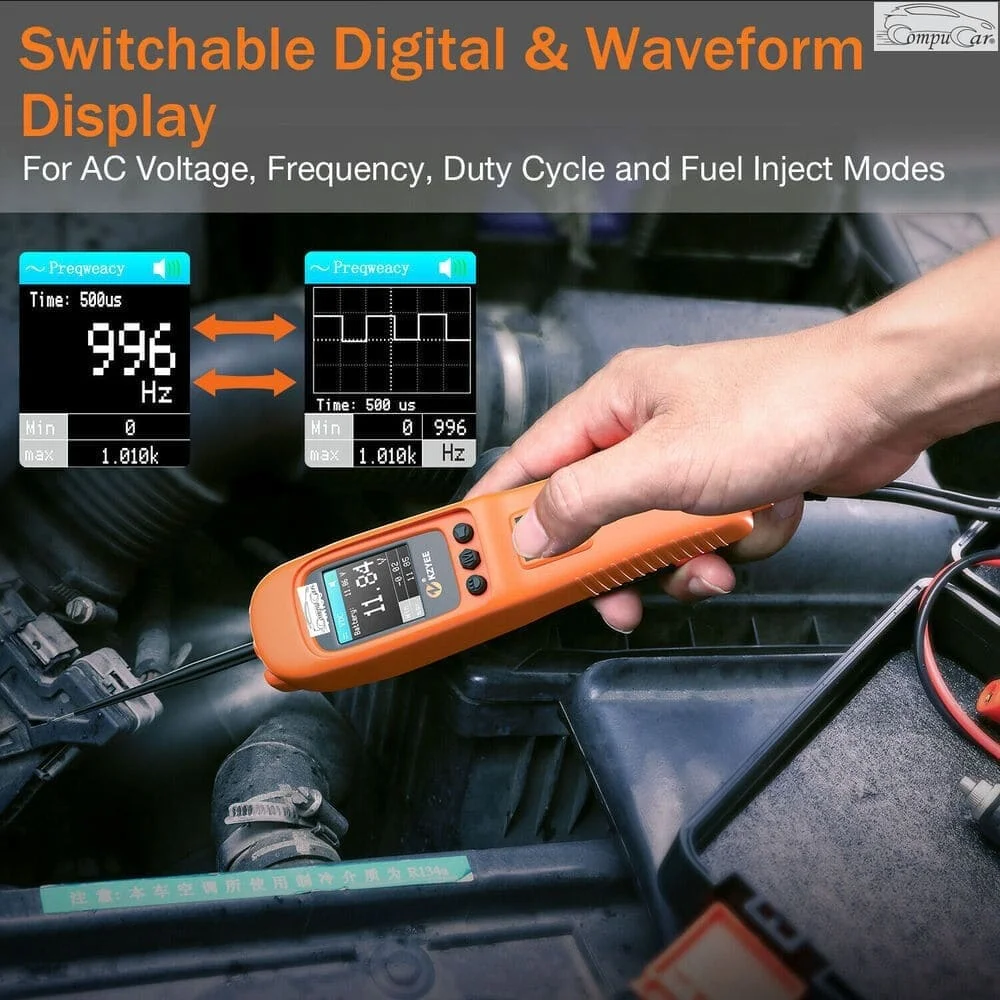
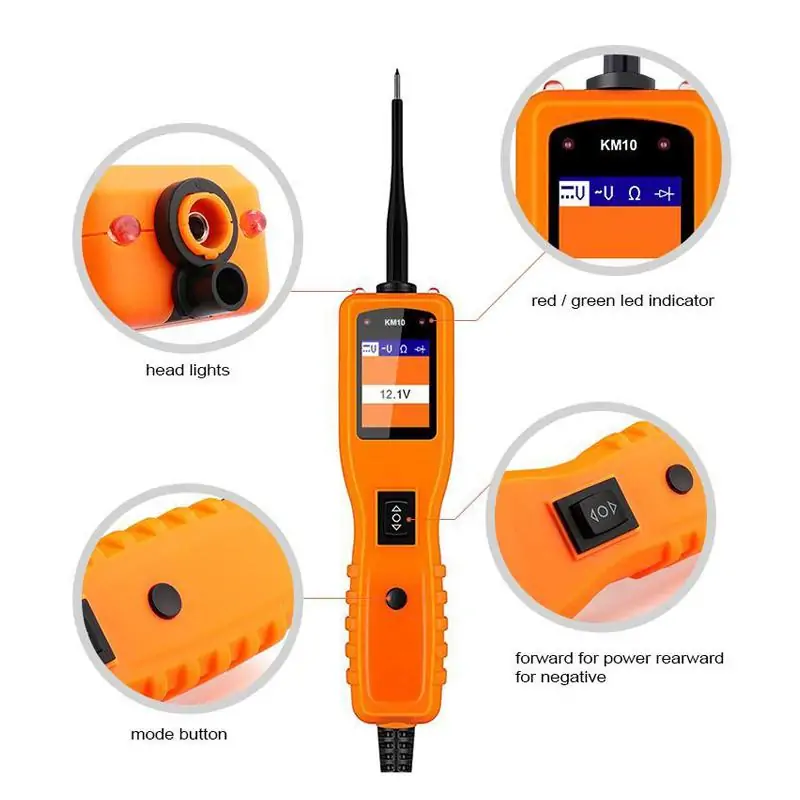
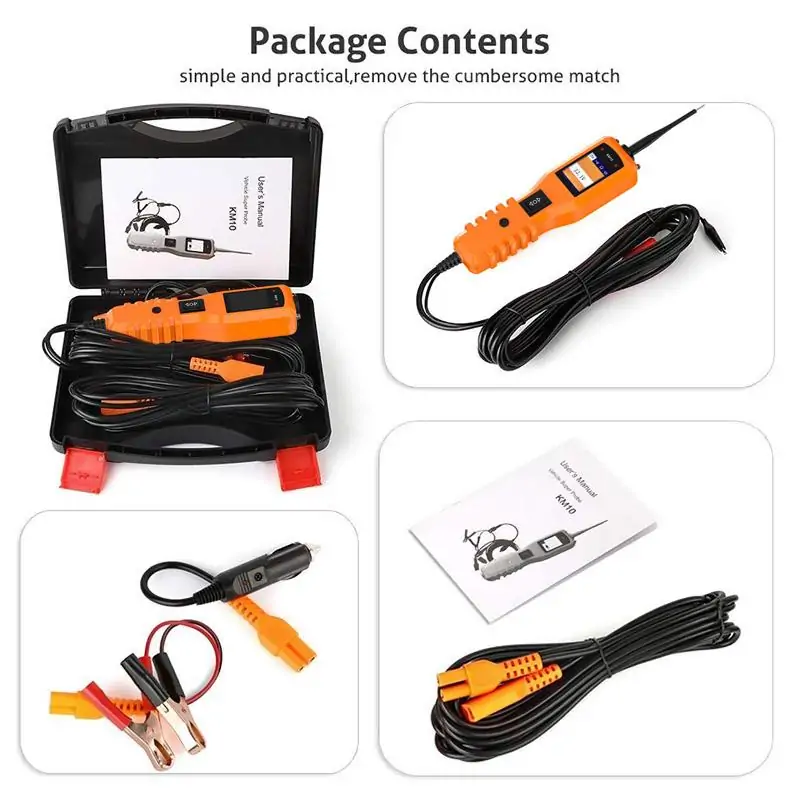

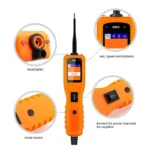
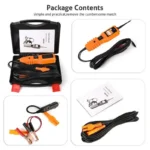

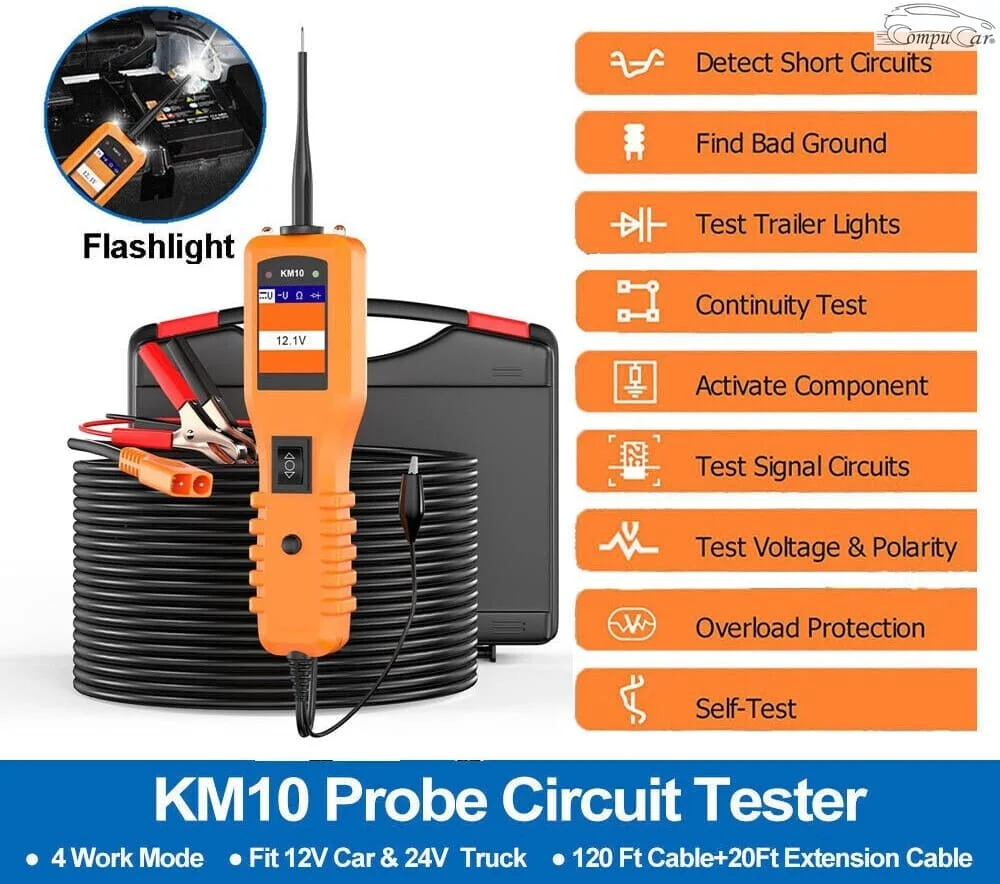
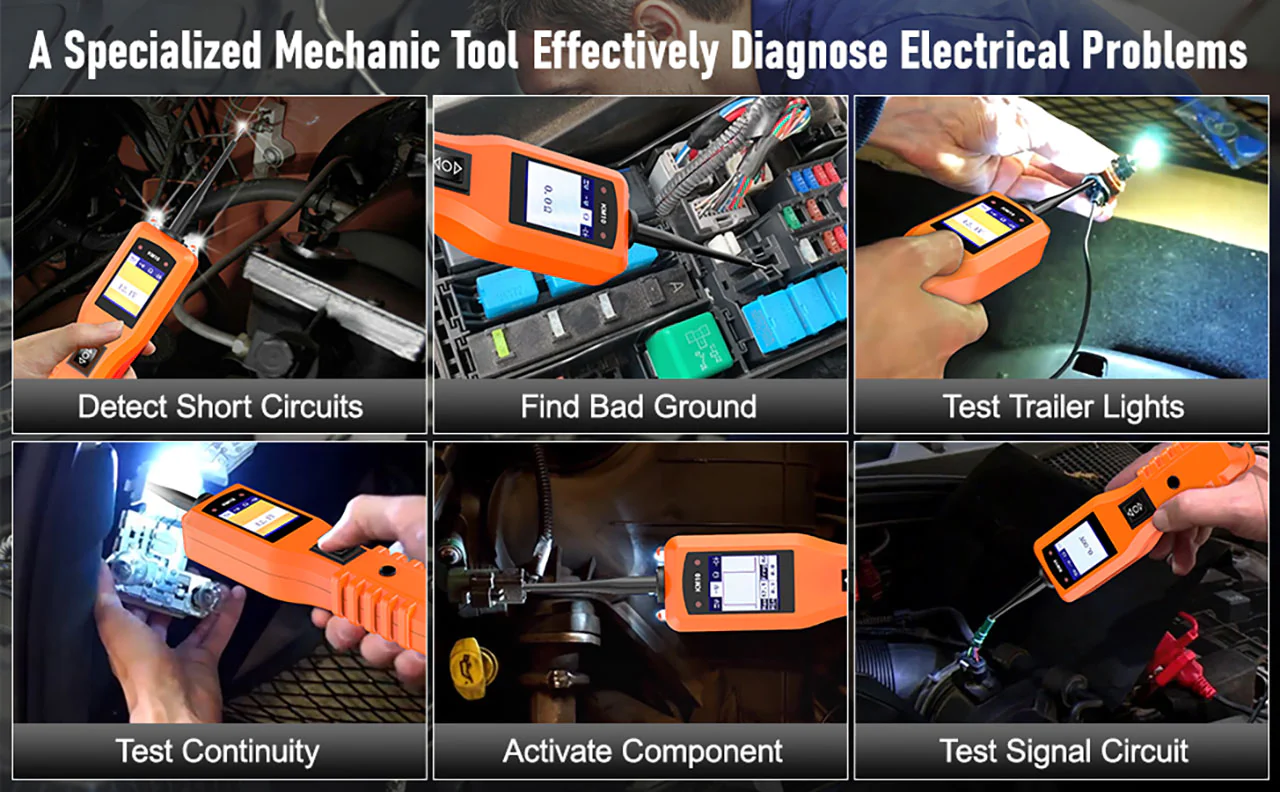



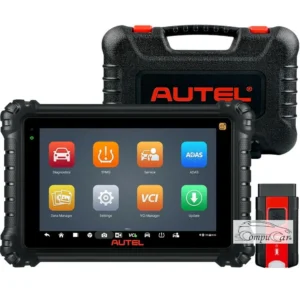
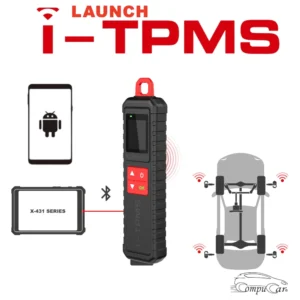
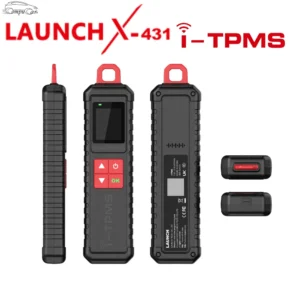
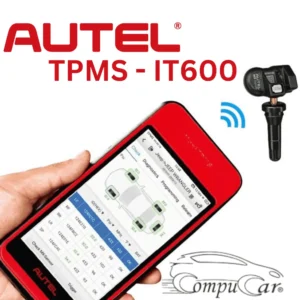
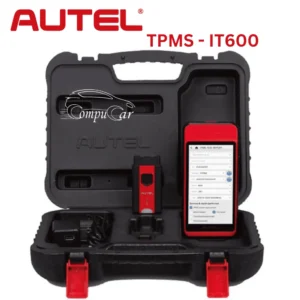
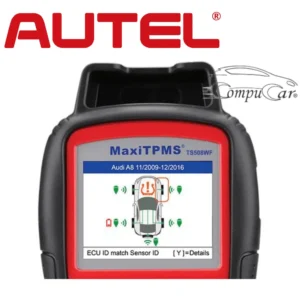

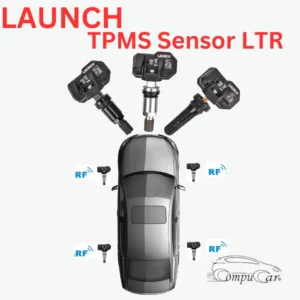


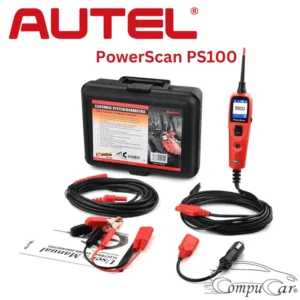

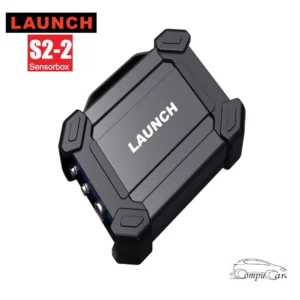
Afnan Khaled –
Good job 👍🏼
Google Maps Rating Link
https://g.co/kgs/RgUuVHu